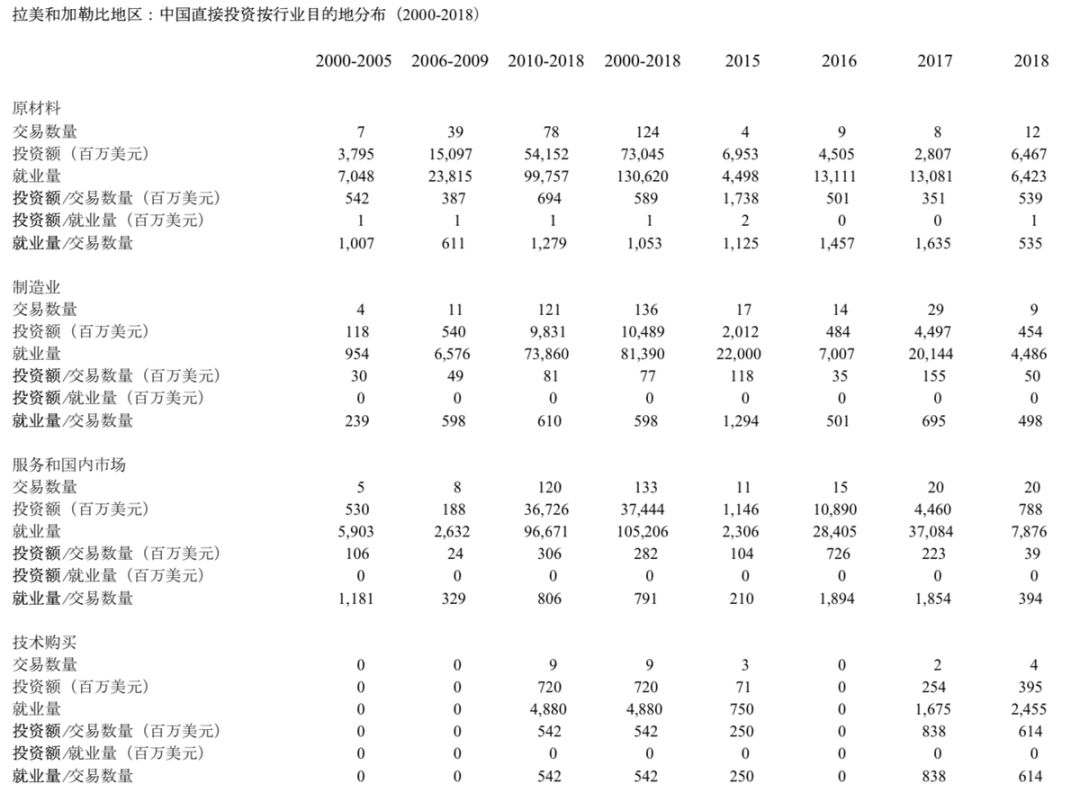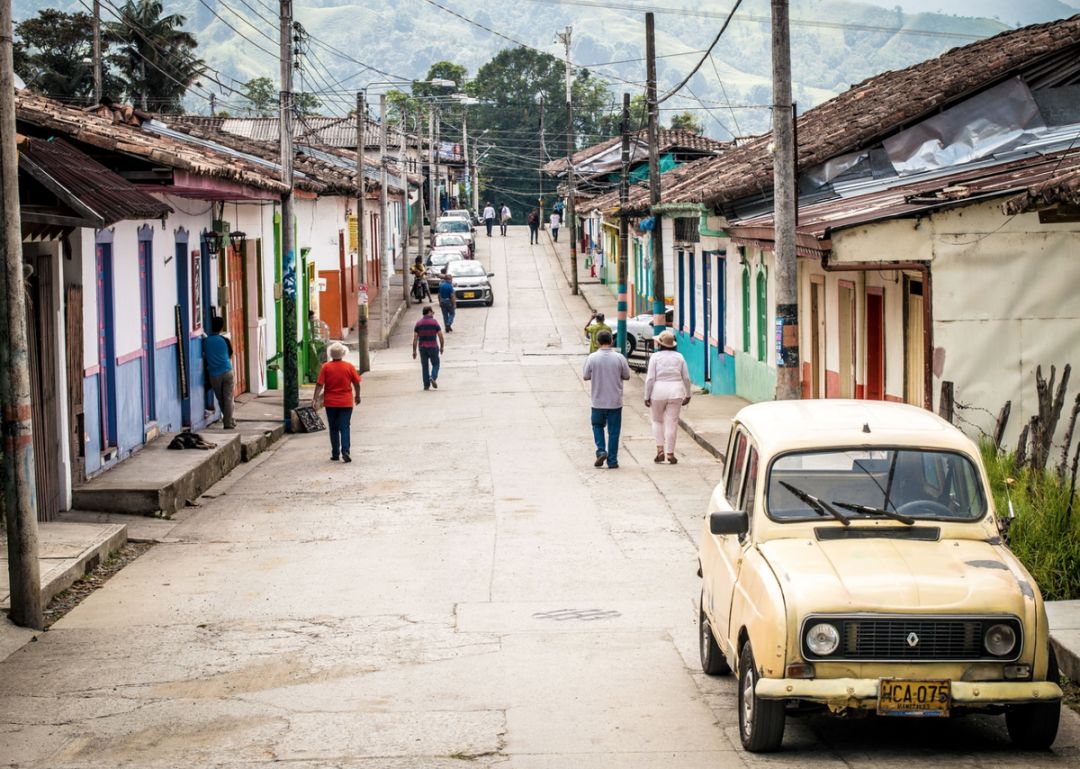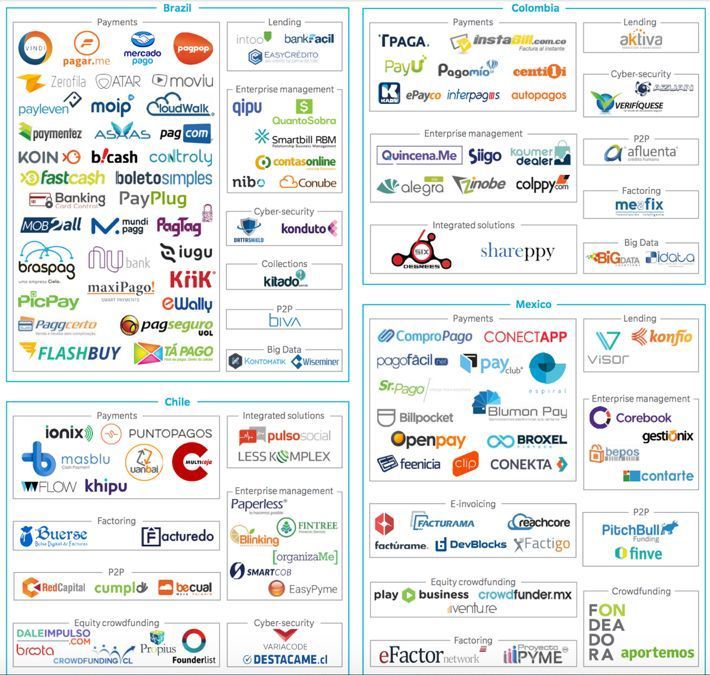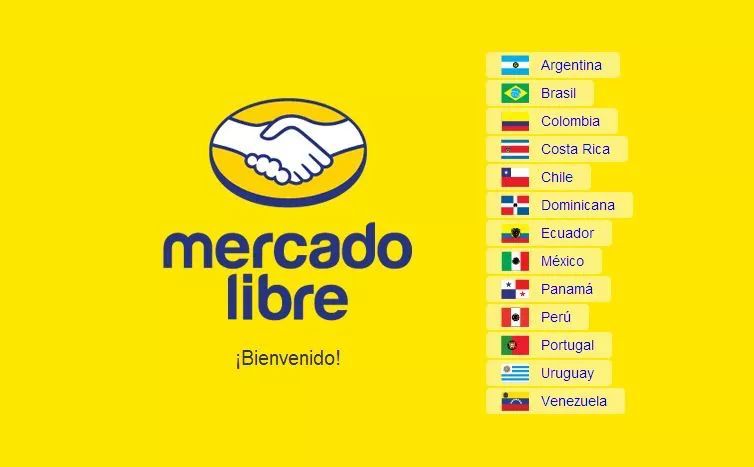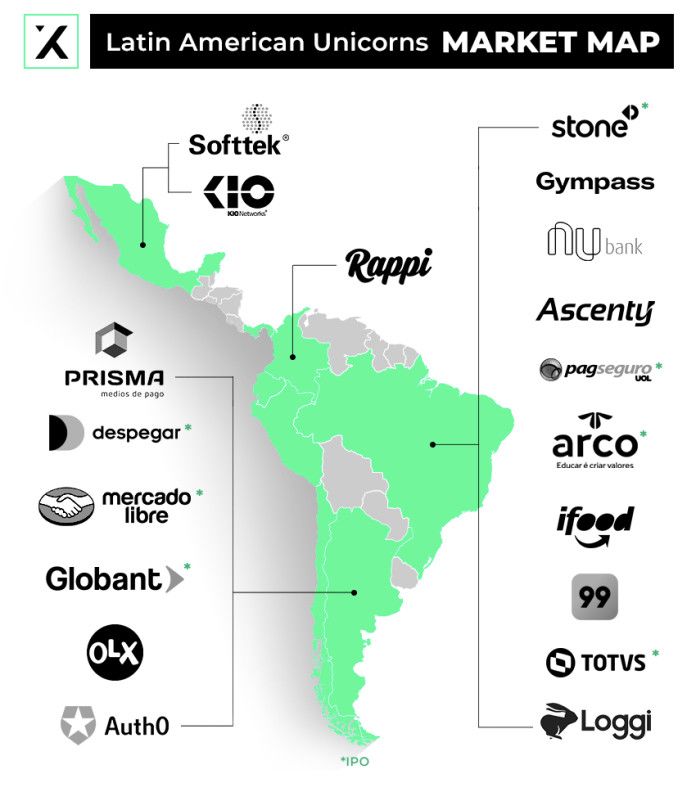Infinite scenery is at the peak.
Editor’s note: This article is from the WeChat public account “deeply” (ID :deep-echo), author Aachen.
In 2019, the domestic market ushered in an important turning point: the total number of mobile Internet users peaked, the growth dividend officially ended, and the domestic mobile Internet market was transferred to the stock competition stage.
A new stage of development, sailing to the sea has become an important choice for Internet entrepreneurs.
Based on past experience, we have already learned about the diversification and complexity of overseas markets. During the National Day, the team has selected a large number of data and market first-line cases to introduce Africa, Southeast Asia, Latin America, India, the Middle East and the United States. The core trends of several major destinations help readers explore the competitive differences in different markets and the nature of user needs, and identify opportunities.
This is the 003th article of the Global Nuggets Series.
Core points:
▪ Many commercial games that are already in use around the world are not to be seen in Latin America.
In the past, China’s investment in Latin America was mainly concentrated in raw materials and manufacturing. Now, Latin America has become a “new place to compete” for technology companies.
▪ From the segmentation track, what opportunities are there in Latin America?
Despite the constant emergence of various obstacles, Huawei has further advanced into the “back garden” of the United States.
In Latin America, Huawei has been providing layout services for many Latin American users for more than 20 years. Now continue to increase the number: the first time in Latin America, the release of “Huawei public cloud”, plans to invest 800 million US dollars in Sao Paulo, Brazil to build a factory in the next three years, and cooperate with the Peruvian telecom operator “giant” Claro to carry out 5G network test.
According to CounterpOint Research reports that in Latin America last year, Samsung mobile phones accounted for 36% of the market, followed by two Chinese faces – Lenovo
(Motorola)
And Huawei, which accounted for 12% and 11% respectively.
It’s not just Huawei’s association that advances into Latin America, but the fast-paced hand seems to be gearing up.
According to the Financial News Agency, Kwai’s overseas product Kwai broke through 3 million in Brazil’s DAU. According to the late report, in September, the vibrato was designated as the Brazilian market inspection month, and in October the team focused on Brazil. The market, the goal is to improve product performance and seek breakthroughs. The growth trend of the Brazilian market is also ranked in Zhang Yiming’s OKR.
In addition to personally, investment is a way of routineization: Didi acquired Brazil’s 99 Taxi, Tencent invested 180 million US dollars in Brazilian digital banking startup Nubank…
In the past, China’s investment in Latin America was mainly concentrated in raw materials and manufacturing. Now, Latin America has become a “new place to compete” for Chinese technology companies.
China’s direct investment in Latin America and the Caribbean
(Distributed by industry destination) Source: China’s Direct Investment Report for Latin America and the Caribbean in 2019
But this is definitely the most difficult land to “cover” in the world.
The beauty of the Latin American market is compared to Europe, America, Japan, South Korea, Southeast Asia, India and even Africa.
This seems to be a region, but in reality these countries sharing the border are completely different worlds.
For the simplest example, many people will divide Latin America into the Spanish-speaking region and Brazil, but in fact, the specific grammar of Colombia, Venezuela, and Argentina in Spanish is also different. This means that different Latin American countries may need different versions of web pages. And the important reason for the slow development of payment business in the regionIt is also difficult to unify in the region.
The bigger difficulty is that
Many commercial games that are already in use around the world are not to be seen here – Latin American companies rarely acquire, startups have low valuations and do not want to go public, too many ambitious venture capital investments The people in Latin America have no income.
Together with political turmoil and heavy dependence on bulk commodity exports, a series of economic and social problems arise. The large fluctuations in the exchange rate have made it huge for a huge investment.
The exchange rate of the Brazilian real against the US dollar was about 0.4 in 2014, and it was as low as 0.23 in 2015. Suppose you invested $1 million in a Brazilian company in 2014. By 2015, when you convert to US dollars or RMB, your assets are directly halved.
It is hard to imagine that there are still gold mines worth exploring in this “100-year-old” land.
Colombia
Macro danger and investment enthusiasm
From a macro perspective, Latin America is by no means a “good place.”
According to incomplete statistics, it was only Colombia. From 1970 to 2010, various armed forces kidnapped about 25,000 people. Last year, Brazil, Mexico, Colombia and other countries just completed the government change, and Argentina, Bolivia, Panama, Uruguay and other countries ushered in the general election this year. The party game has intensified and the reform strategy is yet to be determined.
Colombian Revolutionary Armed Forces (FARC))
In economically,
Latin American countries rely heavily on bulk commodity exports, and the economic development model and growth drivers are too single.
Some major economic indicators in Latin America have performed poorly, and the “double deficit” problem of the current account and government finance has continued.
However, Latin America is not “poor.”
According to the World Bank’s definition of middle-income and high-income countries, Latin America entered the middle-income era as early as the 1970s, and in the early 1990s it entered the middle-to-high income range. Countries such as Brazil, Mexico, Colombia, Argentina, and Peru all have an ultra-high urbanization rate of over 80%.
From the perspective of consumption, as early as 2010, the per capita consumption of several major countries reached 3,986 US dollars in Brazil, 2,337 US dollars in Colombia, and 1,663 US dollars in Mexico. In the same period, the per capita consumption of China and India was only $1401 and $354.
This level of economics has laid the groundwork for the consumer market in Latin America.
Brazil
From the perspective of the Internet environment, Latin America has great potential:
- The penetration rate of Internet users in the region is 62%, far higher than that of developing countries in Southeast Asia, South Asia and Africa;
- 70% of the population has mobile communication services, mobile Internet penetration rate is over 51%, and is expected to grow at a growth rate of 6.2%;
- Smartphone penetration rate is 55%, and is expected to exceed 70% in 2020. Mobile Internet data usage will grow by more than 40% per year;
- The average Latin American spends a lot of time on the mobile Internet every day.First place, the larger economies such as Brazil, Mexico, and Argentina have an average daily mobile Internet for 3.5 hours.
No wonder someone has summarized the Internet situation in Latin America as
“The plate is large, the foundation is good, and the competition is less.”
Brazil Financial Technology Unicorn Nubank
In this complex context, many technology/Internet venture capital funds are willing to fight.
The top investment institutions including Softbank, Sequoia, DST Global, Tiger Fund, Andreessen Horowitz, Accel Partners, etc. have all added to Latin America in the past two years.
In March of this year, Softbank announced the establishment of a $5 billion Latin American special VC fund, and Softbank Group personally contributed $2 billion to the fund. The fund will invest in mid-to-late technology start-ups throughout Latin America, and Softbank’s vision fund will continue to participate in Latin American investment.
This news directly boosted the confidence of the Latin American venture capital market. Softbank Sun Justice believes that “Latin America is becoming the turning point of one of the most important regions in the world, and Latin America’s economy will grow significantly in the coming decades.”
We saw that there are soft silver behind the Ramen, the logistics provider Loggi, the rental platform Quinto Andar, and the digital bank Banco Inter.
Chinese capital has also come.
Drips is said to have acquired Brazil’s shared travel company 99Taxis for $1 billion; Ant Financial has invested in Brazil’s sales terminal company StoneCo; Tencent’s investment is more: Brazilian digital banking startup Nubank, Argentina-based space technology company Satellogic, Argentina mobile payment application Uala…
The giant may understand, but you can’t think of it, the domestic recycling of electronic recycling and retailing such a subdivision of the circuit of love recycling last year invested in Argentina’s second-hand smartphone e-commerce Trocafon.
Cheng Wei and 99 taxi employees meet remotely
However, as mentioned at the beginning, Latin America is not a good stage in the primary market.
In Latin America, many big companies are family businesses. They are not so ambitious. The family cares more about “keeping money”, paying attention to cash flow and dividends, so there is no risk-taking, and large companies rarely acquire.
Due to the small number of mergers and acquisitions, and the lack of listing, the exit channel is very limited. Such a cycle is reversed to financing, and the company’s valuation is relatively low. Strangely, local companies have low valuations, but overseas companies did not like to acquire local companies when they entered the Latin American market. For example, American companies entered the Latin American market until the acquisition of 99 Taxis.
99Taxis is Brazil’s second-largest taxi platform. Brazil has a population of 220 million. If the background is in the Chinese market, 99Taxis will definitely not be sold to Didi’s $1 billion.
But this means that most of Latin America’s startups are in value. A visible trend is that the number of IPOs in Latin America is also increasing.
Segmentation of tracks and real opportunities
It seems that the Latin American market is a bit “chicken”. In such a big environment, what are the sub-segments and real entrepreneurial opportunities in this market?
The first is the payment and finance sector – the most active industry in the development of the Latin American Internet industry. According to 36kr, as of 2018, there are a total of 1,166 in Latin America.Fintech
(Financial Technology)
Startups, an increase of 66% over the previous year. Fintech accounts for 25% of all financing projects in the year and is the largest industry.
The reason why this area can make a big difference is largely because the foundations in Latin America were really bad. The financial system in Latin America has been turbulent in the past 40 years, and financial groups are controlled by big families in various countries. The public hates the financial system very much, and Latin America has become one of the regions with the lowest bank coverage in the world. Nearly half of the adult population does not have a bank account, and only 41% have a bank card.
Before the Internet wave hit, Latin American folks have many informal credit channels. For example, in Colombia’s “Cadenas”, people spontaneously formed a team to raise funds, and everyone took turns to use the money. After the expiration, they handed over the profits to the next user. But obviously such “financial products” are full of loopholes, which also makes people see
Great opportunities for Latin American financial markets, including lending, financial technology and other sectors.
Nubank, which acquired Tencent’s investment, is the representative of the opportunity.
Nubank’s products cut into the market are simple – no credit cards are charged. Credit cards are not charged, and Nubank’s profits come from consumers’ payment targets – merchants. It also launched the virtual credit system “Nubank Rewards”, where each consumer’s consumption will be accumulated into one virtual credit, which can be used to purchase online goods and services such as food and movie tickets. This point system has a similar “virtual currency” role and is used on Nubank’s own platform.
After that, it launched investment accounts and loan business, and became a comprehensive enterprise with credit card, loan, online wealth management and other services.
A Latin American Fintech classification overview, from Finnovista
Solved the problem of “money”, you can take a look at “Buy and buy” section.
In general, most of Latin America’s items are still bought online, and its e-commerce accounts for less than 2% of total retail sales. According to Mercado Libre, the largest e-commerce platform in Latin America,
Latin America’s e-commerce will grow at a rate of 19% per year.
The “backwardness” of Latin American e-commerce is not unrelated to infrastructure. The foundations of the payment system, logistics system and other dimensions are still developing, and the regulations of Latin American countries vary widely, and e-commerce resistance is great.
Mercado Libre is considered a “Latin American version of Taobao.” As of the first quarter of 2019, Mercado Libre had 280 million registered users, 6,000 searches per second, and 11 transactions per second, which has an absolute leading position in the Latin American e-commerce market.
For Chinese gold diggers, the opportunity for Latin American e-commerce is not to actually go to Latin America to do the platform, but to settle in as a seller.
Mercado Libre launches cross-border trade plan
(CBT)
Open the Latin American sales market to Chinese sellers. At present, there are only about 300 Chinese sellers on the platform, and the monthly GMV of each store is about 250,000 US dollars.
Either e-commerce, travel, take-out, There are not many opportunities to be a platform in Latin America. On the one hand, the Latin American market is fragmented, it is difficult to have a “big one” platform, on the other hand, some good players have already been born among the existing players.
If you really want to do a big job in Latin America, perhaps the business of content and traffic is a good entry point.
As mentioned earlier, fast hands and vibrato will focus on strength. What is certain is that the tiger tooth has already acted. In June of this year, NimoTV, the game live platform of Tiger’s teeth, officially entered Brazil, and has begun to collect local head anchor resources in Brazil. It is understood that Nimo TV has signed exclusive cooperation agreements with some YouTube fans with millions of levels of anchors, such as Piuzinho, Elgato, Crusher.And PlayHard and more. In addition, the Brazilian e-sports team represented by INTZ and Black Dragons has signed an exclusive live broadcast agreement with Nimo TV.
Like other markets, Latin America’s main advertising channels are Google, Facebook, Youtube, Twitter, etc.
Tools, live broadcasts, games, short videos, these can be used in Southeast Asia, Japan and South Korea market traffic, in the Latin American market.
In addition, the Latin American opportunity for the game is growing. According to Newzoo’s data, although Latin American game revenue accounts for 4% of total global revenue, the world’s top game developers account for less than 1% of annual advertising budget spending in the region. By simply raising your ad spend budget, developers have the opportunity to dramatically increase the number of downloads in the region.
The data also shows that the Latin American mobile game market grew by 19% in 2018. In 2021, mobile games will account for 51% of the entire game market. In a few years, the number of smartphone users in Latin America will reach 347 million, which is a huge potential market for rival game developers.
Latin unicorn
In the literary masterpiece “One Hundred Years of Solitude”, the land of Latin America is oppressive and indifferent. People lack common beliefs, and when foreign civilizations invade, people seem to be at a loss. They yearn for advanced Western civilization, but they have been abandoned and are in the fate of “loneness.”
Although it cannot be said that the political and economic situation in Latin America can be “mitigated”, in today’s globalization, the logic of business is naturally universal, and it is not impossible to conquer this land.

